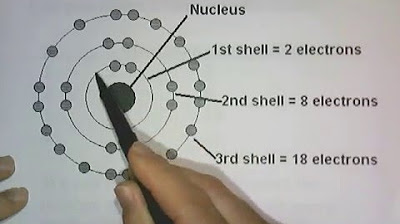The Only Video Needed to Understand Orbital Mechanics
Summary
TLDRThis video explores the fundamentals of orbital mechanics, explaining why spacecraft must achieve specific velocities and altitudes to maintain orbit. It covers the concepts of kinetic and potential energy, orbital shapes, and maneuvers like prograde, retrograde, and radial burns. Using real-life examples, such as the SpaceX Dragon capsule's rendezvous with the ISS, the video explains how speeding up or slowing down affects a spacecraft's orbit. Viewers learn how manipulating energy and velocity allows for precise navigation in space, and the video emphasizes the counterintuitive nature of orbital mechanics.
Takeaways
- 🚀 Orbits depend on velocity and altitude; high enough horizontal velocity prevents a spacecraft from falling back to Earth.
- 🌍 Rockets need to reach a certain altitude to avoid air resistance and achieve the speed necessary for orbit.
- ⚡ Mechanical energy is the sum of kinetic energy (speed) and potential energy (altitude). Both are key to understanding orbital motion.
- 🎢 Mechanical energy in orbits works like a roller coaster: kinetic energy and potential energy constantly exchange but the total remains the same.
- 🔄 Orbits are usually elliptical, with the closest point called perigee and the farthest point called apogee when orbiting Earth.
- 🔥 Prograde burns (firing engines in the direction of motion) increase velocity and altitude, making the orbit more elliptical.
- ⏪ Retrograde burns (firing in the opposite direction) reduce velocity and lower the altitude on the opposite side of the orbit.
- 📉 Radial burns (firing engines towards or away from Earth) don’t increase velocity but rotate the orbit without significant energy gain.
- 📐 Normal and anti-normal burns change the inclination of the orbit, but are fuel-intensive and used for orbital corrections.
- 🛰️ When trying to rendezvous with the ISS, a retrograde burn is often used to lower altitude and speed up, then a prograde burn is used to circularize the orbit.
Q & A
What is the basic requirement for a spacecraft to stay in orbit?
-A spacecraft needs to achieve sufficient horizontal velocity at a high altitude to stay in orbit. This velocity must counteract the pull of Earth's gravity, allowing the spacecraft to continuously 'fall' around Earth without hitting the surface.
How do kinetic and potential energy contribute to a spacecraft's mechanical energy?
-Mechanical energy is the sum of a spacecraft's kinetic energy (due to its speed) and potential energy (due to its altitude). These two types of energy define its overall mechanical energy in orbit.
Why is air resistance absent in orbit, and why is this important?
-Air resistance is absent in orbit because spacecraft operate at high altitudes where Earth's atmosphere is extremely thin or nonexistent. Without air resistance, spacecraft can maintain the high speeds necessary for orbit without being slowed down.
How does a spacecraft's orbit change when performing a prograde burn?
-A prograde burn increases a spacecraft's velocity and kinetic energy. This causes the spacecraft to gradually climb to a higher altitude, resulting in an elliptical orbit with a larger apoapsis.
What effect does a retrograde burn have on a spacecraft's orbit?
-A retrograde burn decreases a spacecraft's velocity, reducing its kinetic energy. This causes the spacecraft to move closer to Earth on the opposite side of the orbit, lowering the orbit's altitude and making it more elliptical.
Why can't a radial-out burn directly increase the altitude of a spacecraft's orbit?
-A radial-out burn, which points directly away from Earth, does not add horizontal velocity to the orbit. While it can momentarily increase altitude, the spacecraft slows down as a result, causing the opposite side of the orbit to move closer to Earth, effectively rotating the orbit without substantial energy gain.
What is the difference between a normal burn and an anti-normal burn?
-A normal burn changes the inclination of an orbit, causing the spacecraft to rise perpendicular to its current path. An anti-normal burn has the opposite effect, lowering the inclination. These burns rotate the orbit relative to the planet and are fuel-intensive.
What happens to a spacecraft's orbit after a retrograde burn during a rendezvous with another spacecraft?
-During a rendezvous, a retrograde burn decreases the spacecraft's velocity, causing it to descend to a lower orbit and move faster relative to the other spacecraft, helping to close the gap between them.
Why does increasing altitude result in a slower orbital speed?
-As a spacecraft climbs to a higher altitude, its potential energy increases while its kinetic energy decreases. The trade-off between the two means the spacecraft moves slower in a higher orbit due to the conservation of mechanical energy.
How does the moon's orbit illustrate the relationship between orbital altitude and speed?
-The moon, which orbits Earth at a high altitude, moves much slower than satellites in lower orbits. It takes roughly one month to complete one orbit around Earth due to its higher altitude and the corresponding slower orbital speed.
Outlines

هذا القسم متوفر فقط للمشتركين. يرجى الترقية للوصول إلى هذه الميزة.
قم بالترقية الآنMindmap

هذا القسم متوفر فقط للمشتركين. يرجى الترقية للوصول إلى هذه الميزة.
قم بالترقية الآنKeywords

هذا القسم متوفر فقط للمشتركين. يرجى الترقية للوصول إلى هذه الميزة.
قم بالترقية الآنHighlights

هذا القسم متوفر فقط للمشتركين. يرجى الترقية للوصول إلى هذه الميزة.
قم بالترقية الآنTranscripts

هذا القسم متوفر فقط للمشتركين. يرجى الترقية للوصول إلى هذه الميزة.
قم بالترقية الآنتصفح المزيد من مقاطع الفيديو ذات الصلة

GCSE Physics - What is an Orbit? #86

Bones of the orbit - Human Anatomy | Kenhub

Kepler s Laws of Planetary Motion & Calculation Examples // HSC Physics

Energy Levels, Energy Sublevels, Orbitals, & Pauli Exclusion Principle

Ordinary Differential Equations (ODEs) | Fundamentals of Orbital Mechanics 2

FISIKA KAUNTUM : ARTI FISIS FUNGSI GELOMBANG
5.0 / 5 (0 votes)
